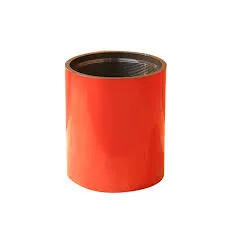- Afrikaans
- Albanian
- Amharic
- Arabic
- Armenian
- Azerbaijani
- Basque
- Belarusian
- Bengali
- Bosnian
- Bulgarian
- Catalan
- Cebuano
- Corsican
- Croatian
- Czech
- Danish
- Dutch
- English
- Esperanto
- Estonian
- Finnish
- French
- Frisian
- Galician
- Georgian
- German
- Greek
- Gujarati
- Haitian Creole
- hausa
- hawaiian
- Hebrew
- Hindi
- Miao
- Hungarian
- Icelandic
- igbo
- Indonesian
- irish
- Italian
- Japanese
- Javanese
- Kannada
- kazakh
- Khmer
- Rwandese
- Korean
- Kurdish
- Kyrgyz
- Lao
- Latin
- Latvian
- Lithuanian
- Luxembourgish
- Macedonian
- Malgashi
- Malay
- Malayalam
- Maltese
- Maori
- Marathi
- Mongolian
- Myanmar
- Nepali
- Norwegian
- Norwegian
- Occitan
- Pashto
- Persian
- Polish
- Portuguese
- Punjabi
- Romanian
- Russian
- Samoan
- Scottish Gaelic
- Serbian
- Sesotho
- Shona
- Sindhi
- Sinhala
- Slovak
- Slovenian
- Somali
- Spanish
- Sundanese
- Swahili
- Swedish
- Tagalog
- Tajik
- Tamil
- Tatar
- Telugu
- Thai
- Turkish
- Turkmen
- Ukrainian
- Urdu
- Uighur
- Uzbek
- Vietnamese
- Welsh
- Bantu
- Yiddish
- Yoruba
- Zulu
Understanding the Fundamentals of Tubing and Casing in Oil and Gas Operations
Understanding Tubing and Casing in Oil and Gas Extraction
In the oil and gas industry, tubing and casing are critical components that play a vital role in the extraction process. These two elements are essential for ensuring the safety, efficiency, and productivity of wells drilled into the earth.
Casing refers to the series of pipes that are installed in the wellbore after drilling has been completed. Its primary functions include providing structural support to the well, preventing the collapse of the wellbore, isolating different pressure zones, and protecting freshwater aquifers from contamination by hydrocarbons and other harmful fluids. Casing is typically made from steel and is installed in sections, which are cemented to secure them in place and provide a seal against fluid migration.
On the other hand, tubing is a smaller diameter pipe that is placed inside the casing. Its main purpose is to transport oil and gas from the production zone to the surface. Unlike casing, tubing is designed to be removable, allowing for easier maintenance and replacement as needed. Tubing must withstand high pressures and corrosive environments, so it is often made from high-strength alloys or coated to enhance its durability.
tubing and casing

The installation of both tubing and casing is a meticulous process
. It involves careful planning and engineering to ensure that they can withstand the environmental stresses encountered during operation, including pressure variations and temperature fluctuations. Engineers conduct thorough assessments and simulations to select the appropriate materials and designs for specific geological conditions.One significant aspect of tubing and casing is their impact on the overall efficiency of hydraulic fracturing, a technique used to enhance oil and gas recovery. Properly installed and maintained casing prevents leaks that could jeopardize the fracturing process, while tubing ensures efficient flow rates, maximizing production.
In summary, tubing and casing are foundational components in oil and gas wells, each serving distinct but complementary purposes. Their effective implementation not only safeguards the integrity of the well but also contributes significantly to the economic viability of oil and gas extraction projects. As technology advances, the continuous improvement in materials and installation techniques will further enhance the safety and efficiency of these critical systems.
-
Tubing Pup Joints: Essential Components for Oil and Gas OperationsNewsJul.10,2025
-
Pup Joints: Essential Components for Reliable Drilling OperationsNewsJul.10,2025
-
Pipe Couplings: Connecting Your World EfficientlyNewsJul.10,2025
-
Mastering Oilfield Operations with Quality Tubing and CasingNewsJul.10,2025
-
High-Quality Casing Couplings for Every NeedNewsJul.10,2025
-
Boost Your Drilling Efficiency with Premium Crossover Tools & Seating NipplesNewsJul.10,2025







